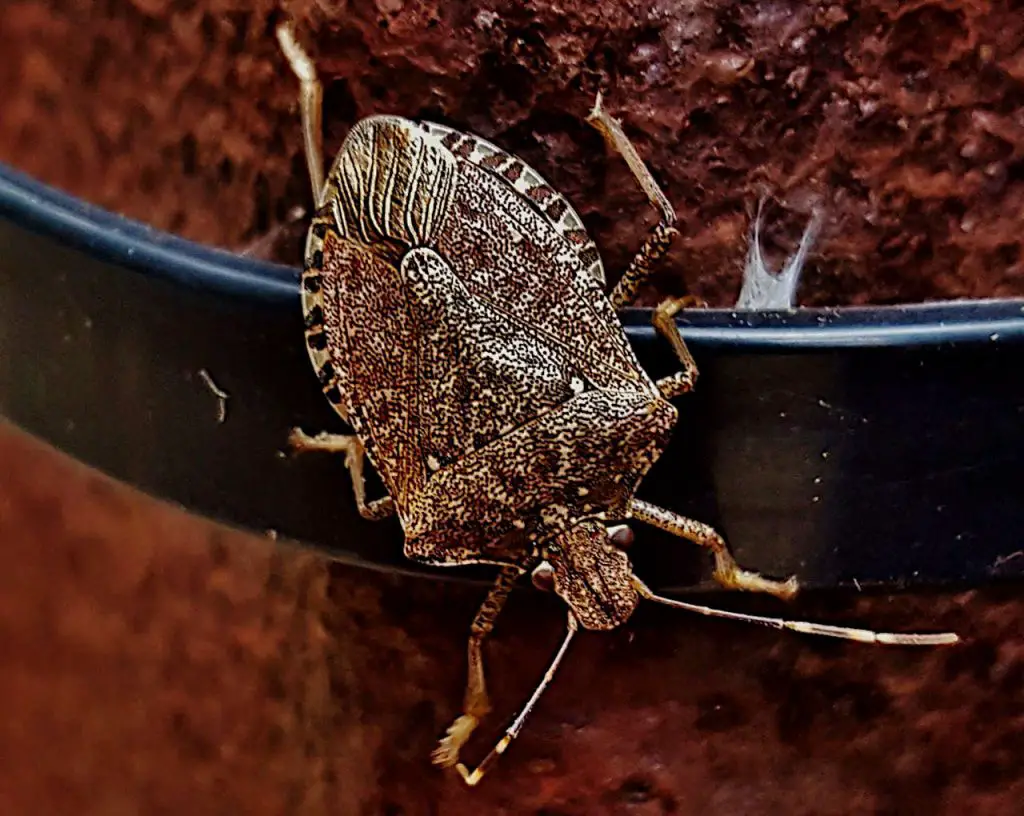Tomatoes and Lavender at Risk This Summer | Threat to Plant Health
The UK’s Royal Horticultural Society (RHS) has become deeply concerned that tomatoes and lavender plants could be under threat from imported pathogens and pests this summer.
The organization has flagged up that the with increasingly warmer weather patterns we are experiencing there now is an increased the possibility of pests and diseases that usually thrive under much warmer climate conditions now being able to do so in the UK and in other previously more temperate climates across Europe and North America.
The problem is enough of a concern for the UK government to launch a discussion on the issue starting with its Invasive Species Week.
Pests and diseases that attack tomatoes and Lavender
The two threats that are causing the most concern are the brown marmorated stink bug and the pathogen xylella fastidiosa.
The Threat Posed by The Brown Marmorated Stink Bug

One species of insect of particular worry is the brown marmorated stink bug (BMSB). This pest comes from Asia and experts are concerned that the insect could spread widely in temperate climates. This pest can destroy crops, particularly tomatoes and tomatoes and hibernates.
Why are brown marmorated stink bugs a problem for plants?
BMSBs feed on a wide variety of plant hosts, including fruits, vegetables, ornamentals, field crops, and weeds. Damage from BMSB feeding can show up in several ways: producing holes and notches on fruits and leaves; causing premature leaf drops; and, occasionally, killing plants.
BMSBs can also directly damage some crops. For example, stink bugs feeding on peppers have damaged fruit and reduced yield.
How do stink bugs spread? BMSB adults are “hitchhikers” that can travel long distances on vehicles, in shipping containers, and on people. They are mostly active outdoors in late spring, summer, and early fall. When the weather is warm, stink bugs are attracted to light-colored buildings, where they crawl into cracks and crevices. BMSBs enter houses only on warm, sunny days in the fall, winter, and early spring.
BMSBs are a nuisance pest but are generally not considered agricultural pests.
Dealing with Brown Marmorated Stink Bugs
Brown marmorated stink bugs can be a nuisance pest that invades homes and other buildings. They are also agricultural pests.
The problem is there is currently no effective way of treating an infestation.[1] Insecticides are only having short-term and limited effects. The best solutions are preventative, for home gardeners this means sealing up possible access points for the bugs.
Inspect outdoor lights for egg masses. Also check homes, cars, and buildings for egg masses.
If found remove these egg masses from homes and buildings.
The threat posed by xylella fastidiosa

Xylella fastidiosa, is another problem. This plant bacterium is a problem in many parts of Europe and the US. It can destroy around 500 different types of host plants. Particular susceptible are lavender and rosemary.
Xella fastidiosa is a gram-negative bacterium that primarily affects plants. This bacterium is the causal agent of Pierce’s disease (PD), a disease that affects more than 700 plant species. the bacterium X. fastidiosa (Xf) has rapidly become a major threat to plant health worldwide.
The symptoms caused by Xf on plants are diverse and often confused with those of other leaf and fruit diseases, including leaf scorch, yellowing, chlorosis, necrosis, stunted growth, leaf drop, flower and fruit drop, and reduced production. In particular, the bacterium can survive on plant surfaces for several weeks and can be spread by insects, wind, rain, and contaminated tools and clothing.
Dealing with xylella fastidiosa is also difficult. You will have to employ an integrated disease management strategy should be used to control it. This is likely to mean the destruction of the area surrounding the diseased plants and is an issue that will almost certainly involve a country’s environmental protection agencies.
This should concern the whole horticulture industry
Glen Powell, RHS Head of Plant Health, is worried he commented that “concern, not just for the RHS but £ 24 billion horticulture industry as a whole, are new threats whose impact is as yet untested.”
He ominously pointed out that if the Xylella virus were discovered in the United Kingdom, all plants within a minimum of 100 meters would need to be destroyed, and there would be limits on plant transportation within a five-kilometer radius for five years. This could effectively put gardens, nurseries, and garden centers out of business.
Because of the potential danger, the RHS has set up a laboratory at their Garden Wisely establishment to further study and prepare as best as possible for these and other possible future threats. The laboratory will be able to study molecular diagnosis of various plant pests and pathogens in a secure environment.
It is important to note that plant health has now become a key concern for both gardeners and farmers. The RHS recently said that they have had to respond to more than 22,000 queries, on plant health. This is over a 90% increase in the number of queries from the year before.
Notes:
[1] New Jersey Agricultural Experiment Station: How to Control the Brown Marmorated Stink Bug
